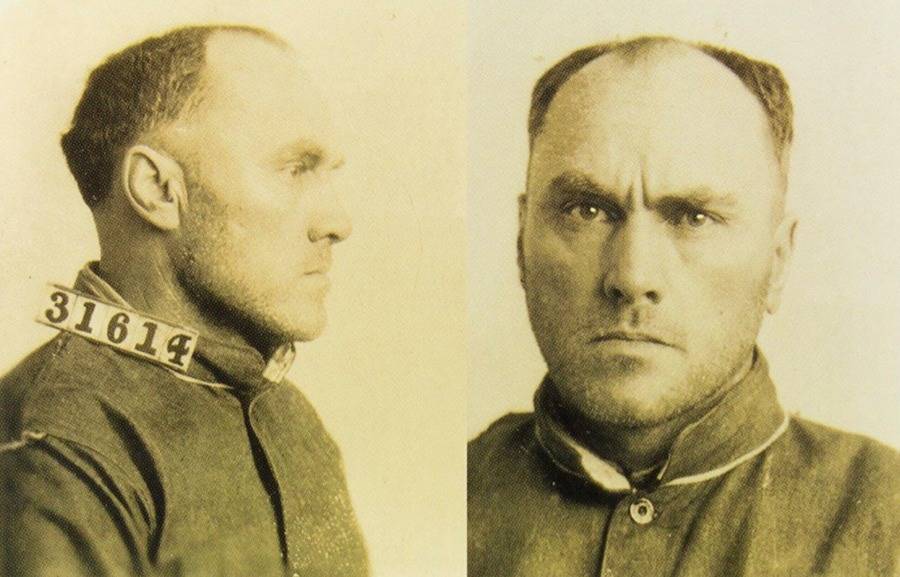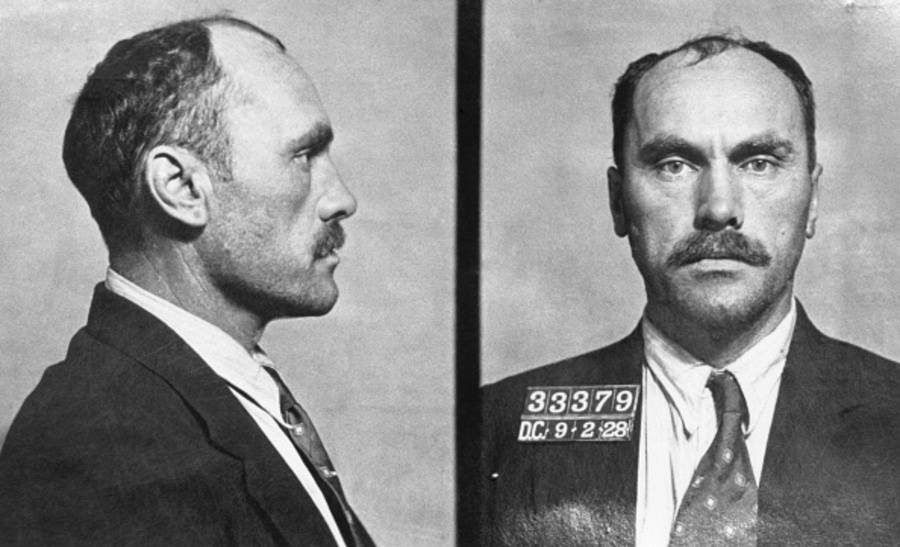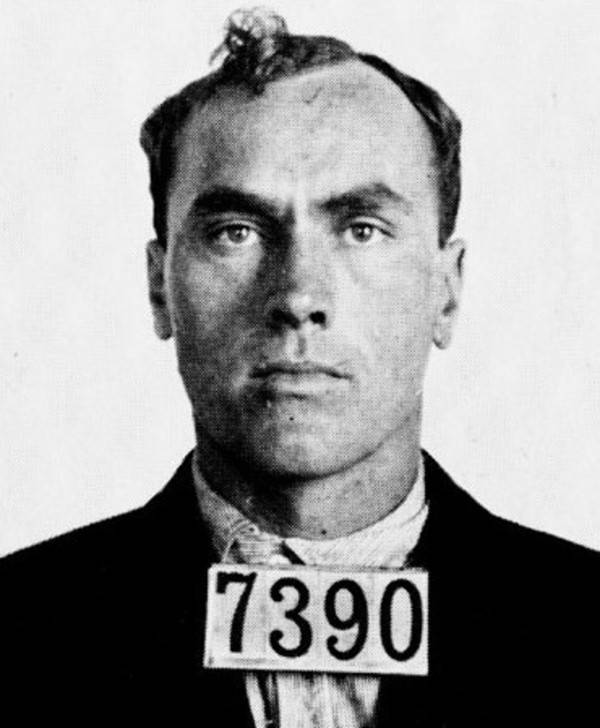
Before he was executed in 1930, Carl Panzram confessed to a litany of crimes that included burglary, arson, rape, and murder — and didn’t express one bit of remorse.
Toward the end of his life, American serial killer Carl Panzram admitted to committing 21 murders, more than 1,000 acts of sodomy, and thousands of robberies and arsons. But he was far from repentant. To use his own words: “For all these things I am not in the least bit sorry.”
For nearly three decades before his execution in 1930, Charles “Carl” Panzram committed violent acts without a shred of hesitation. Even being behind bars didn’t stop him from unleashing terror on his fellow inmates. When he was sent to prison ahead of his hanging, he assured the warden that he’d kill the first man who bothered him — and that’s what he did.
But before the authorities could sentence Panzram to death, he embarked upon one of the most chilling criminal careers in modern history.
The Tumultuous Early Years Of Carl Panzram

Creative CommonsOne of serial killer Carl Panzram’s many mugshots.
Criminologists often blame Carl Panzram’s sadistic behavior on his troubled upbringing, which was full of constant neglect and severe abuse.
Panzram was born in Minnesota to East Prussian immigrant parents on June 28, 1891. His father abandoned the family when Panzram was just a little boy. At the young age of 12, Panzram committed his first burglary when he stole cake, apples, and a revolver from a nearby home in the area.
His first theft landed him in the Minnesota State Training School, where he was beaten, raped, and tortured by the school’s staff. He was released from school in his teens. Shortly thereafter, he ran away from home.
Panzram then moved from place to place by hopping train cars. It was during one of his rides in a train wagon that he was gang-raped by a group of “hobos,” according to Investigation Discovery. The incident shocked Panzram to the core. He later said that it left him “a sadder, sicker, but wiser boy” — and a boy who would soon start viciously raping others.
Meanwhile, he continued hopping train cars, burning down buildings, and robbing innocent people that he encountered during his travels. In fact, it was his stealing that got him into trouble once again in 1908.
He was convicted and sent to the United States Disciplinary Barracks at Fort Leavenworth in Kansas. Of his experience at the correctional facility, he said, “I was a pretty rotten egg before I went there, but when I left there, all the good that may have been in me had been kicked and beaten out of me.”
Once released, Panzram returned to his bad habits and progressively became a more violent criminal, as he assaulted and raped many of his robbery victims. He was caught and sentenced on numerous occasions for a variety of crimes — especially stealing. An elusive thief he was not.
An Escalation Of Horrific Violence

Bettmann/Getty ImagesThe full extent of Carl Panzram’s crimes wasn’t known until years after his death.
In 1915, Carl Panzram was sentenced to seven years at the Oregon State Penitentiary. Once again, he had been caught stealing.
Life at Oregon State Penitentiary was tough. The guards took an immediate dislike to Panzram (probably because he refused to cooperate with the authorities) and made his life a living hell, according to truTV. They beat him, hung him from rafters, and placed him in solitary confinement. While in solitary confinement, Panzram ate little else but cockroaches.
During his first year of imprisonment at Oregon State Penitentiary, Panzram helped one of the inmates — Otto Hooker — escape from the facility. While on the run, Hooker had killed the penitentiary’s warden, making Panzram an accessory to the crime — his first known involvement in a murder.
Panzram decided not to stick around the penitentiary either. In 1917, he escaped but was caught and returned to prison. Undeterred by his failure, Panzram escaped once again in 1918. And just a couple of years later, he would embark on a horrific murder spree on the East Coast.
In 1920, Panzram stole enough money to buy a yacht — thanks to an unusually successful burglary of the home of former President William Howard Taft — and named his boat the Akiska. That same year, Panzram began luring American soldiers in New York to his yacht, where he raped them, killed them, and dumped their bodies in the Atlantic Ocean.
He later claimed to have murdered 10 men in this way.
The Akiska eventually sank, and Panzram decided to head toward Africa. He stowed away on a ship and got off in Angola, where he soon raped and killed a young boy. According to psychiatrist Helen Morrison’s book My Life Among the Serial Killers, Panzram later wrote of that horrifying incident, “His brains were coming out of his ears when I left him and he will never be any deader.”
But Panzram was not satisfied with just one murder in Angola. He wanted more death, more destruction, more blood. A few days later, he killed six local guides who were about to take him on a crocodile hunting expedition. As he put it, the crocodiles later devoured their bodies with gusto.
About a year later, Carl Panzram grew tired of living in Africa and decided to move on. His next port of call was to be Lisbon. However, it turned out that the police were looking for Panzram in Portugal, aware of his murders in Africa. Feeling trapped, Panzram decided to return to America.
The Gruesome Legacy Of Carl Panzram

Wikimedia CommonsIronically enough, it was Carl Panzram’s thievery that would lead to his downfall.
Back in America, Panzram continued raping and killing men and boys. He was strong enough that he could overpower most of his victims. But while Panzram was a frighteningly skilled killer, he was still a bad thief.
In 1928, he was once again arrested for robbery and sent to Leavenworth Federal Penitentiary. But that wasn’t the only crime that he would be punished for while he was there. After he confessed to killing two young boys, Carl Panzram was sentenced to 25 years in prison.
Carl Panzram hated prisons, and he especially hated the Leavenworth Federal Penitentiary. He attempted to escape, but he wasn’t successful. The guards caught Panzram and beat him unconscious. A year later, Panzram killed the laundry foreman by beating him dead with an iron bar. It was for this crime that Carl Panzram was sentenced to death.
The death sentence was almost like a dream come true for Carl Panzram. As he once put it: “I look forward to a seat in the electric chair or dance at the end of a rope just like some folks do for their wedding night.” When human rights activists tried to interfere on his behalf and stop his execution, he scorned them and publicly wished that he could kill them all.
Somehow, Panzram still managed to make a friend while on death row. A guard named Henry Lesser felt sorry for Panzram and gave him a dollar to buy cigarettes. Soon afterward, the two became friends.
Lesser then began slipping Panzram writing materials, encouraging him to write his life story before he died. And Panzram did just that, sparing no grisly details of his murders. Lesser eventually published Panzram’s writings in Panzram: A Journal of Murder, albeit only in 1970. The killer’s graphic account of his crimes was too gruesome for many to stomach.
Carl Panzram had just a year to pen his life story as he was hanged on September 5, 1930. He was 39 years old at the time of his death, and almost no one — with the possible exception of Lesser — was sad to see him go.
Panzram’s last words before the hanging? “Hurry it up, you Hoosier bastard! I could kill a dozen men while you’re screwing around!”